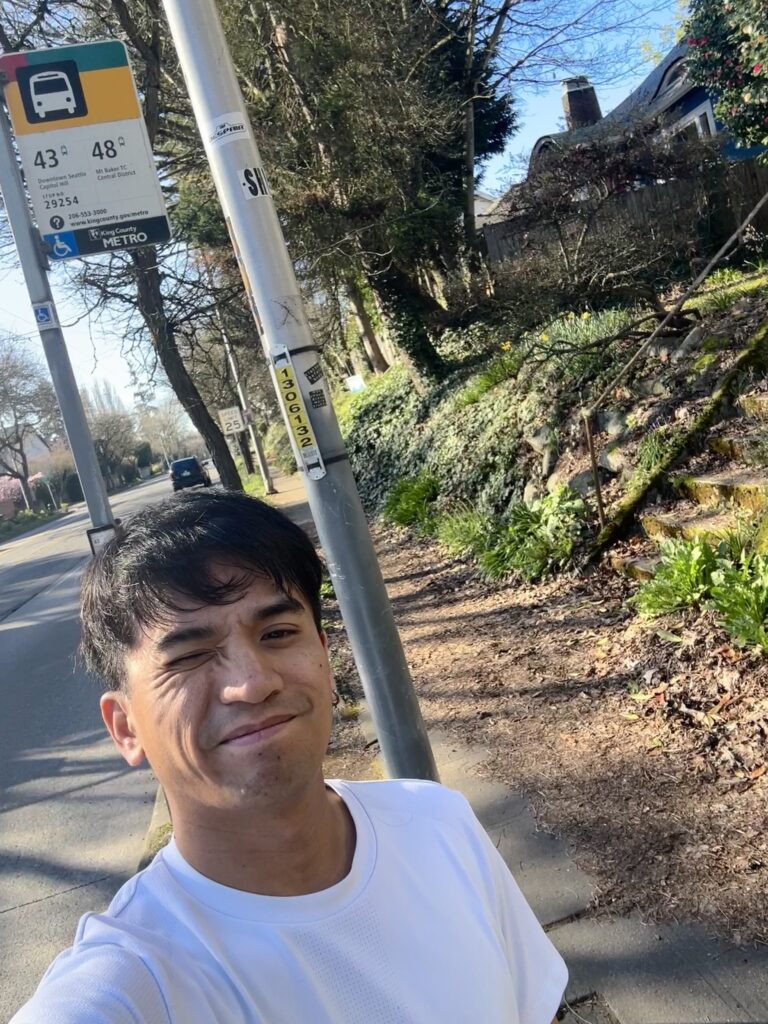Seattle, Washington

I was born in the Philippines. I grew up in Egypt and then moved to Pennsylvania, then NYC, and finally, I moved to Auburn, Washington, when I was 16 to finish high school. Auburn is 30 minutes south of Seattle.
When I moved to Auburn, I lived with my aunt and cousins. They were busy, and I could not depend on them for rides, so I began using public transportation. We lived on the top of a big hill, and I had to take the bus in order for me to see my friends or attend an event. In Auburn, public transportation was limited. There were only two buses that came into my neighborhood, and they ran every 30 minutes; service ended at 10:30 p.m. and didn’t run on Sundays.
There is much better service in Seattle, where most buses run until 3 a.m. and often run every 10 to 15 minutes. That means that I can get around easily. When I was an undergrad at the University of Washington, I used to study until 3 a.m. and take the bus home to where I was living. But transit isn’t perfect in Seattle. When commuting to campus in the morning, it wasn’t unusual for three full buses to go by and not stop because the buses were so full. I often had to walk to be on time to class. Now, I live by Volunteer Park on Capitol Hill, and I work in Columbia City. There’s only one bus that runs from the University District to Mt. Baker Station. I would take this to go to Rainier Beach Ave and then transfer to another bus to get to Columbia City. All of this takes 40 -60 minutes, depending on how slow the 48 bus is. To drive directly, it would take 10-15 minutes. It is even harder to get to surrounding areas and neighborhoods like Ballard, Fremont, and Bellevue. It usually takes more than an hour because you must transfer to another bus that cuts through the city or across the bridge.
I often travel outside of Seattle for work or internships. For example, I take the bus to Tacoma to attend meetings for my internship. There is a direct bus to Tacoma, so that is easy enough. However, it is more difficult to get around if the meetings are outside of the downtown area. The buses going outside of downtown come every 30 minutes. It becomes time-consuming trying to catch a bus or transfer a bus. You can end up waiting 20 to 30 minutes to catch another bus. Sometimes, I give up and take an Uber.
Public transportation plays an important part in addressing climate change. The more we reduce our dependence on cars, the more carbon emissions we will reduce. Public transit is also more affordable; purchasing a car and paying for gas and parking is out of reach for many people, like myself.
I love NYC; riding the subway makes getting to where you need to go so easy. That is the kind of service we need everywhere. Many people like me have multiple jobs, and it would make it easier for us to juggle our schedules. So, I am urging you to invest in Public Transit and fund expanding service. Transit is an essential service for working people like myself and it will cool the planet.
